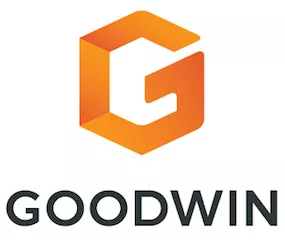- within Intellectual Property topic(s)
- with readers working within the Technology and Oil & Gas industries
- within Transport and Strategy topic(s)
Five critical factors that can determine whether groundbreaking medtech innovations are protected in the US.
As noted in the first article in our Medtech Coming to America series, "US Emerging as Top Global Medtech Destination," perceived regulatory advantages are prompting European medtechs to enter the US market earlier in their life cycles than in the past. But succeeding in the US requires understanding a patent system that has several key differences from the European one.
For medtech companies, intellectual property (IP) is often their most valuable asset — directly influencing market exclusivity, investor confidence, and long-term competitive positioning. A well-planned patent strategy can mean the difference between market leadership and missed opportunity. Companies that don't know how to navigate the US system may fail to obtain adequate patent protection, incur unexpected costs, or overlook strategic advantages unique to the US market.
To help medtech innovators navigate these challenges and strengthen their US market positions, we highlight five key areas in which the US patent system differs from Europe's in ways that can materially impact a company's IP strategy and commercial success.
1. The US Grace Period Can Save a Patent
For a medtech to receive a patent, what they are trying to patent must be considered inventive compared to what already exists (i.e., "prior art"). Patent applicants are often surprised to learn that their own prior disclosures can be used against them. For example, if a medtech company presents the design for its new device at a conference and later applies for a patent, the United States Patent and Trademark Office (USPTO) can point to that conference presentation to reject the patent application — even though the company disclosed its own invention.
This is true in both Europe and the US. However, the US provides a 12-month grace period during which a patent applicant's own disclosures can't be considered prior art. In the conference example, if the patent application was filed within 12 months of the presentation, the USPTO can't use that disclosure to reject the patent. The European Patent Office provides no such grace period — any public disclosure before filing can be considered prior art and may prevent the granting of the application.
2. Patent Protections Can Be Broader in the US
What can be patented differs significantly between the US and Europe, particularly in four key areas that are relevant for medtech companies. These differences affect the scope of protection available and can influence fundamental business decisions about product development and IP strategy.
Methods of Treatment
Methods of treatment for humans and animals can be
patented in the US, meaning an inventor can patent the specific
therapeutic steps for treating a condition or disease. An example
might include a method of automatically reading a user's
physiological characteristics through sensors, determining an
appropriate amount of a therapeutic agent to dispense, and then
dispensing the agent. In Europe, methods of treatment using a
medical device generally cannot be patented, although products used
in those methods — such as the medical device itself —
can be.
Software
The European Patent Office is stricter about software patents and
only allows them if the software provides a "technical
effect" beyond running on a computer. This means providing a
technical solution in a technical way. US patentability of software
is broader because it focuses less on whether the software is
solving a technical problem and more on the practical use of the
software. The USPTO allows software to be patented if the software
is integrated into a practical application, includes
"significantly more" than abstract ideas such as a law of
nature or mathematical equation, and doesn't monopolize all
uses of the abstract idea.
Functional Claims
Europe generally prohibits functional claiming (i.e.,
describing what a device does rather than how it's built as the
basis for claiming a patent). The US is more permissive, allowing
inventors to claim patents for devices by their functions and/or
structures. This means US claims can be much broader, since any
structure that performs the claimed function could infringe the
patent.
Functional claims typically take two forms: means-plus-function claims (e.g., means for fastening X to Y) or quasi-structural claims (e.g., a filter for removing particles smaller than Z).
However, there's an important distinction between claiming a device's functionality and claiming its intended use. While functional features can strengthen a patent, claim language that only describes intended use (e.g., "a server that generates an encrypted message for use in a secure transmission") may not limit the claim scope and, therefore, may be given no weight by the USPTO during examination.
Figures as Support for Claims
Europe requires strict, literal support for patent
claims, meaning medtechs generally can't combine features from
different examples (i.e., embodiments) or rely on details shown
only in the figures (i.e., drawings), unless those combinations or
features are clearly described in the text.
In the US, figures are considered an integral part of the specification — the written description of the invention that supports and explains the claims. Not only can features shown in the figures be included in the claims (e.g., element A is in direct contact with element B), but US practice also generally requires the figures to reflect every claimed element. A well-developed set of figures can be valuable during prosecution — helping the examiner understand the invention and serving as a basis for claim amendments that may go beyond what's literally stated in the text. US patent examiners typically allow more flexibility in amending claims based on how someone skilled in the art would interpret the specification in light of the figures, without requiring exact wording.
This approach can be more challenging for software-related inventions, in which claim features often involve abstract logical operations. Still, strong results are possible by including flow charts, data flow diagrams, system architecture diagrams, and other visual tools commonly used in computer science to illustrate how the invention works.
3. Follow-On Filings Are More Affordable in the US
A single patent application can lead to multiple granted patents, but both US and European patent offices will examine only one inventive concept per application. To pursue more concepts, applicants must file separate applications — called continuation or divisional applications in the US (a "divisional" is a special type of continuation application in the US) and divisional applications in Europe — and pay additional fees.
The cost of filing these additional applications is higher in Europe. When medtechs file a divisional application there, they must pay not only the standard filing fee but also a lump sum to cover all unpaid annuity (i.e., renewal) fees dating back to the original filing date of the parent application. These retroactive payments can be significant — often exceeding $10,000. In the US, continuation or divisional applications require standard filing fees only.
4. US Patents Can Last Longer
Most patents last for 20 years from their filing date. In the US, however, that term can be extended in two important ways:
- Patent term adjustment compensates for delays caused by the USPTO during examination.
- Patent term extension (PTE) provides more time to account for regulatory review. This is particularly relevant to medtech companies whose products undergo lengthy U.S. Food and Drug Administration approval.
PTEs are generally not available for medical device products in Europe, meaning US patents can often provide longer market exclusivity in regulated sectors like medtech. While Europe does, in some circumstances, grant supplementary protection certificates that extend the patent term to compensate for the time taken to obtain regulatory approval, generally, such extensions are only available for drugs or other medicinal products and aren't available for medical device inventions.
5. Inventor Rights Work Differently Across Borders
Some European countries recognize special rights for inventors — often called "moral rights" — that can entitle them to compensation or allow them to pursue patent protection if their employers decline to do so. No such rights exist in the US, where patent rights are typically governed solely by contract.
This difference can affect how companies approach IP strategy. For example, in the US, a company may choose to keep an invention as a trade secret. In jurisdictions with inventor rights, however, that same decision could expose the company to the risk of the inventor patenting the idea independently.
As European medtechs expand into the US and hire stateside employees, they should carefully review their employment agreements. A one-size-fits-all IP assignment clause may fall short when applied across jurisdictions.
* * *
Medtech companies that understand and proactively navigate these five key differences are far better positioned to build robust, defensible IP portfolios and fully capture the commercial value of their innovations. Those that don't are risking costly oversights, missed market opportunities, and in some cases, the complete loss of patent rights in the US.
For European medtechs aiming to compete — and win — in the US market, aligning patent strategy with these jurisdictional nuances early in the development process isn't just smart, it's essential. Doing so can be the deciding factor in whether a promising innovation becomes a market leader or a lost opportunity.
The content of this article is intended to provide a general guide to the subject matter. Specialist advice should be sought about your specific circumstances.




